If you have ever been to Texas and ordered authentic barbecue, you may have had giant smoked beef ribs presented to you on a platter (with white bread and a pickle). These huge plate ribs are thick, meaty, and, when prepared low and slow, some of the best bbq you can enjoy. But, these ribs are not for the faint of heart. It takes a slow cook and basic seasonings to smoke the best beef ribs, and we’re breaking down exactly how.
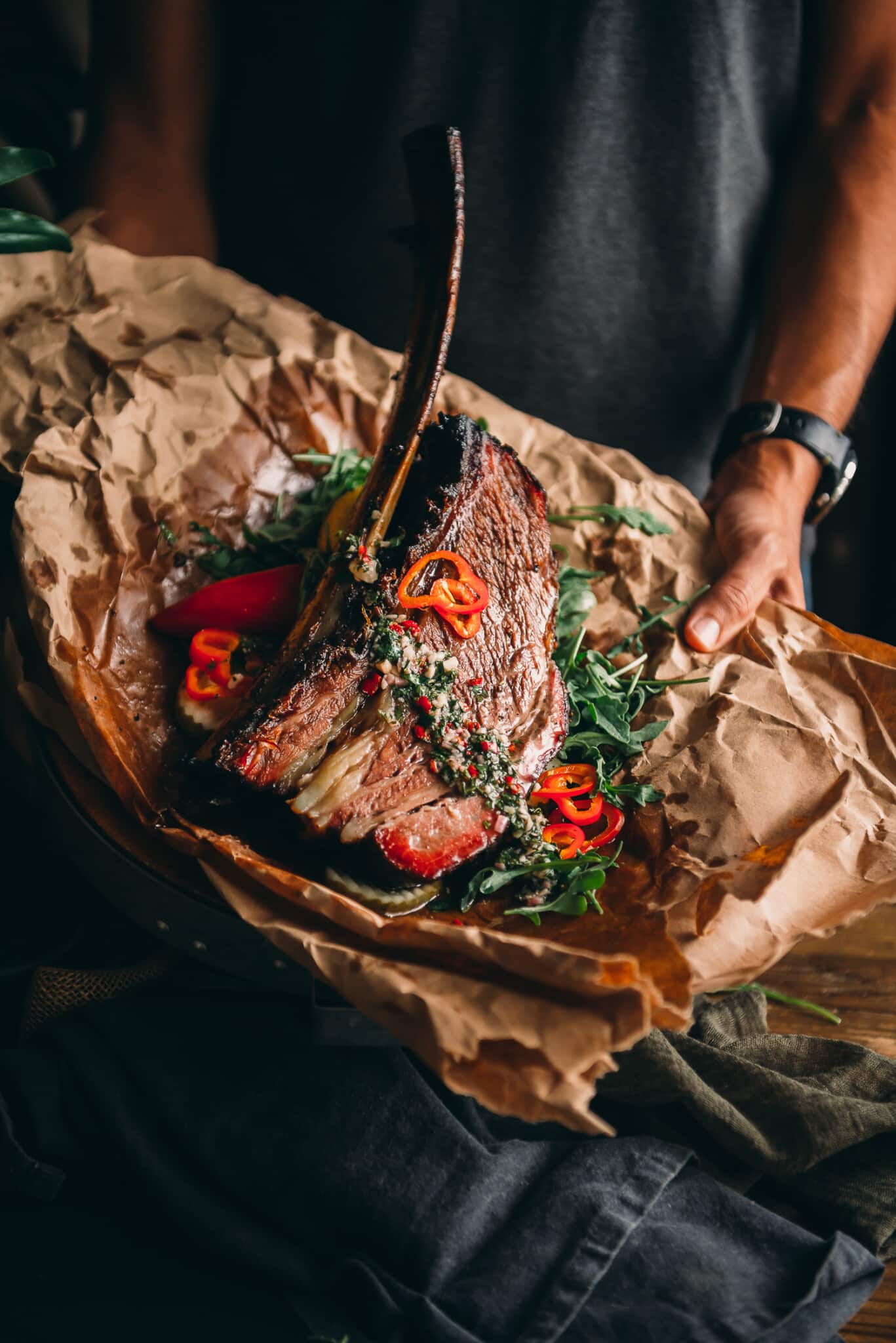
Table of Contents
In this recipe:
If you’ve ever enjoyed authentic Texas BBQ or have seen pictures of it (thanks, Instagram), you know the mighty beef rib. A huge bone with a thick mountain of meat attached, often presented with a glorious smoke rib from hours of low and slow barbecue and loving attention. And here’s exactly how to turn that rack of beef ribs into your own Instagram-worthy (and more importantly) delicious dinner.
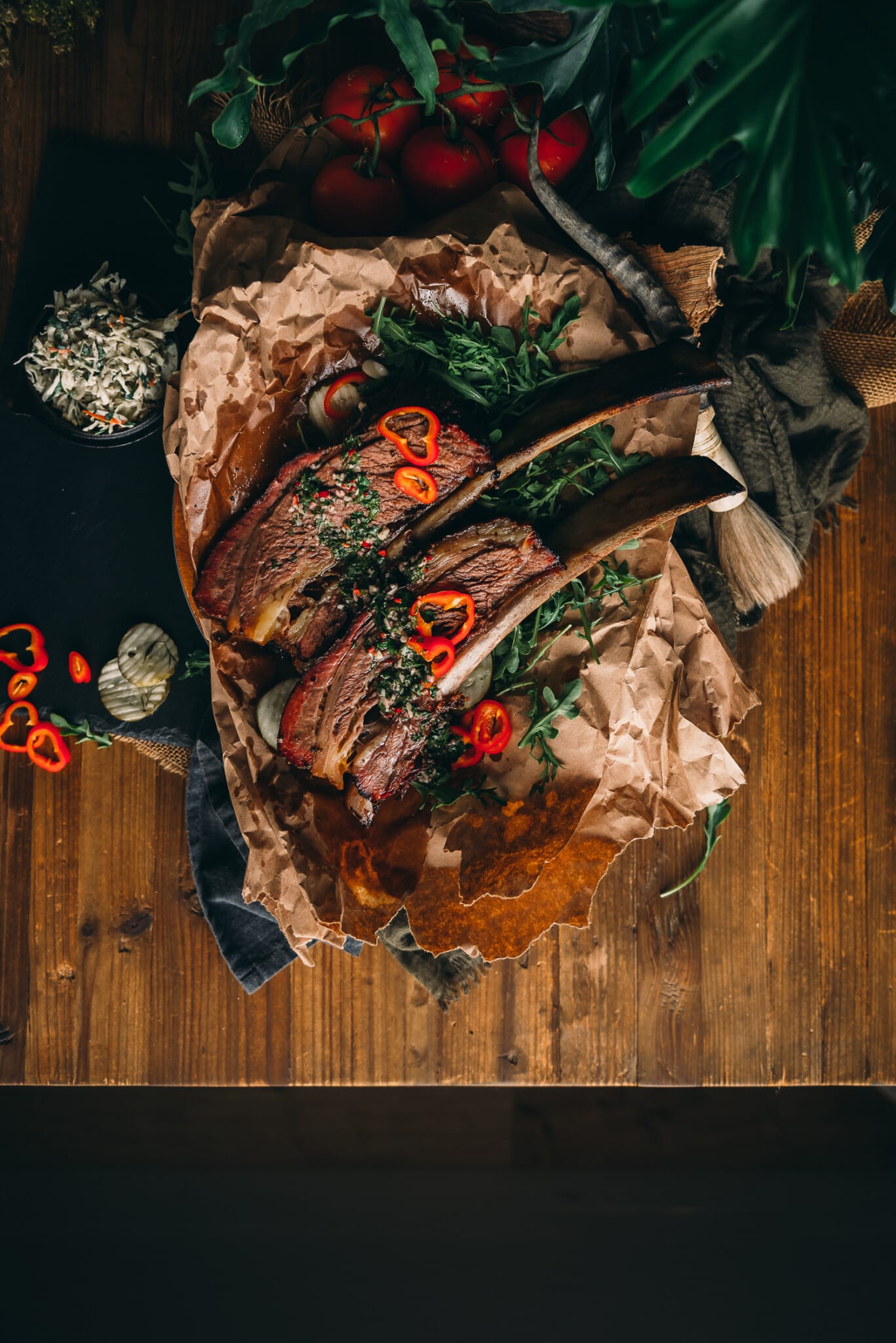
What are beef plate ribs?
Those huge smoked beef ribs you see in Texas barbecue are smoked beef plate ribs. Not beef back ribs. Also called dino ribs; They come from the short plate primal cut, which is located directly below the rib primal on a cow (via Beef, it’s what’s for dinner). Unlike back ribs, which come from the rib primal and have a thin layer of meat, the plate rib will have a thick layer of meat and fat attached to the bone. This is where the plate short rib and flanken-style ribs (Korean short ribs) come from.
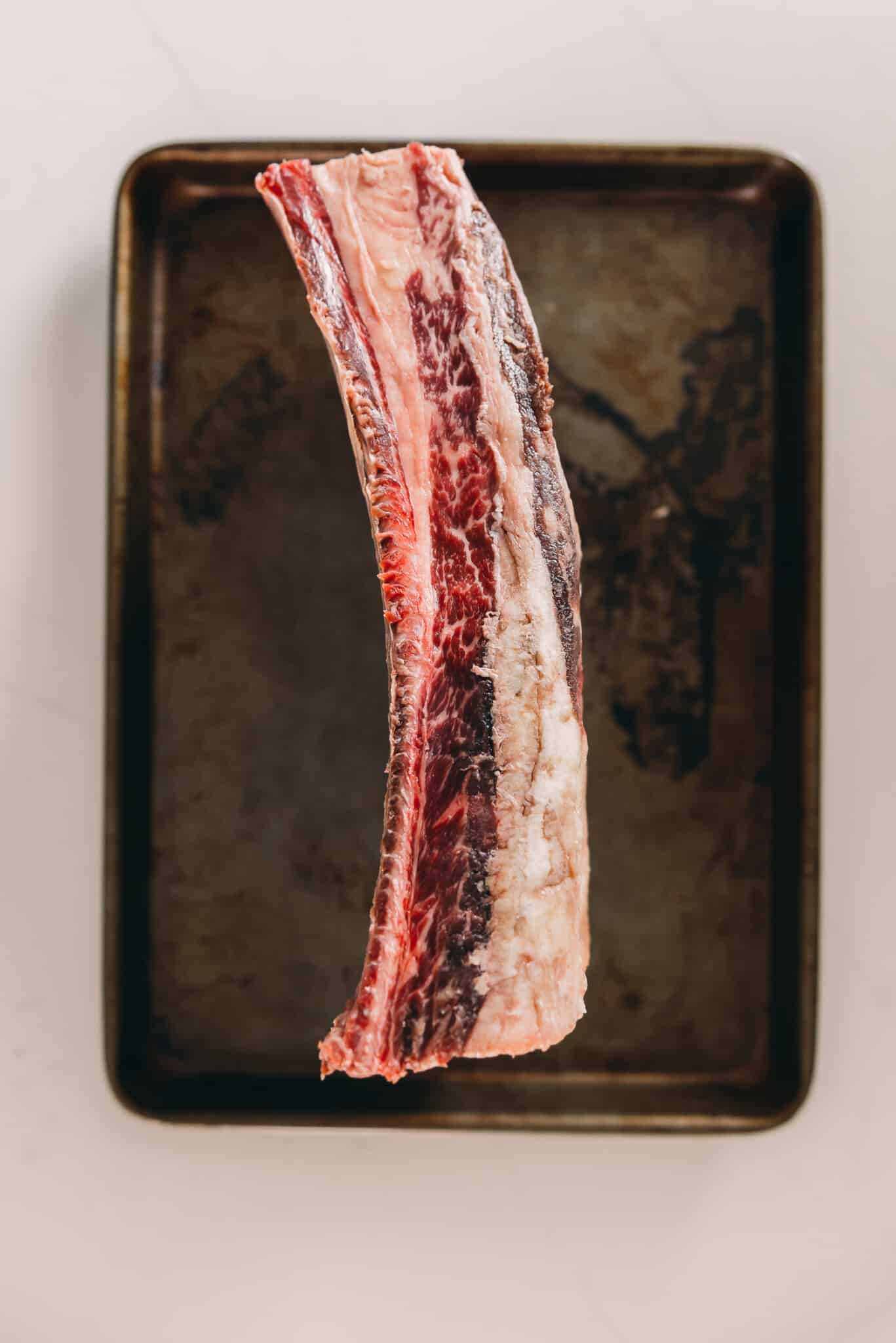
If you’re going to splurge on beef ribs, this is where the investment is worth it. Where we can find beef back ribs at the market, don’t get the two confused. Dino ribs aren’t often in the regular grocery store and should be ordered through your butcher. We get these from Porter Road; see our trusted places to order meat online for delivery to your door.
However, because they come from the plate (belly) area of the cow, just like our smoked beef short ribs, they do have a layer of fat and tough connective tissue and require a low and slow heat source for the best results. We may love the braised short ribs, but when it comes to this huge hunk of meat, classic barbecue cooking is the best way to lock in great smoky flavor and juicy, tender bites!

Ingredients
This recipe is for true Texas Smoked Beef Ribs, which means the ingredient list is pretty short. We’re using what’s known as an SPG rub, salt, pepper, and garlic. And a lot of people believe for great smoked beef, that’s all you need.
- Kosher salt
- Course ground black pepper
- Garlic powder – or granulated garlic
- Beef Plate Ribs – we get ours from Porter Road.
- Apple cider vinegar-based mop – we recommend our vinegar based bbq sauce in a spray bottle
How to Smoke Beef Ribs
Don’t be intimidated by this huge rack of ribs! I’ve tested these several times and actually sacrificed an entire rack to the fire my first time cooking these years ago (which is why I don’t recommend hanging them). With these simple steps, you’ve got this!
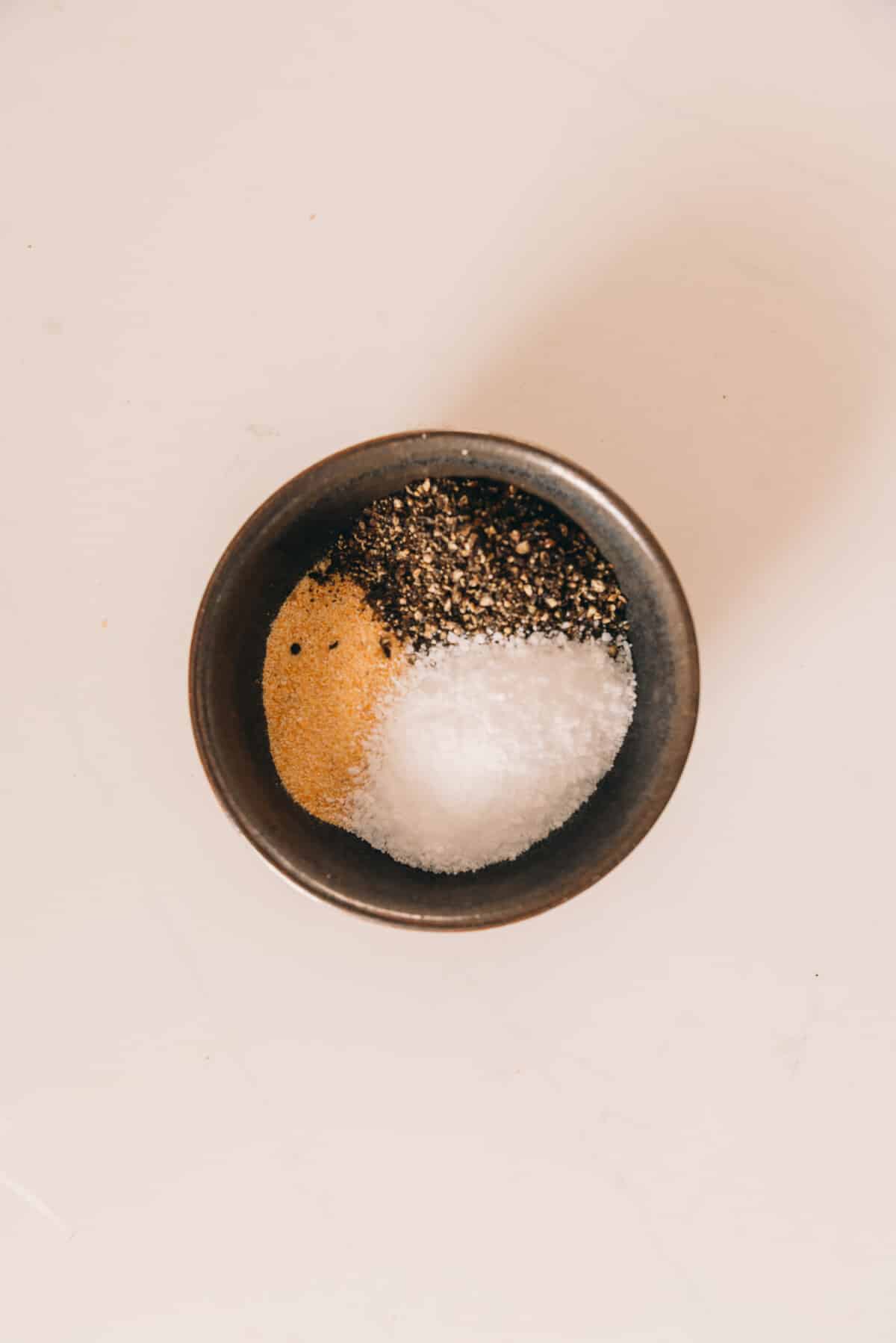
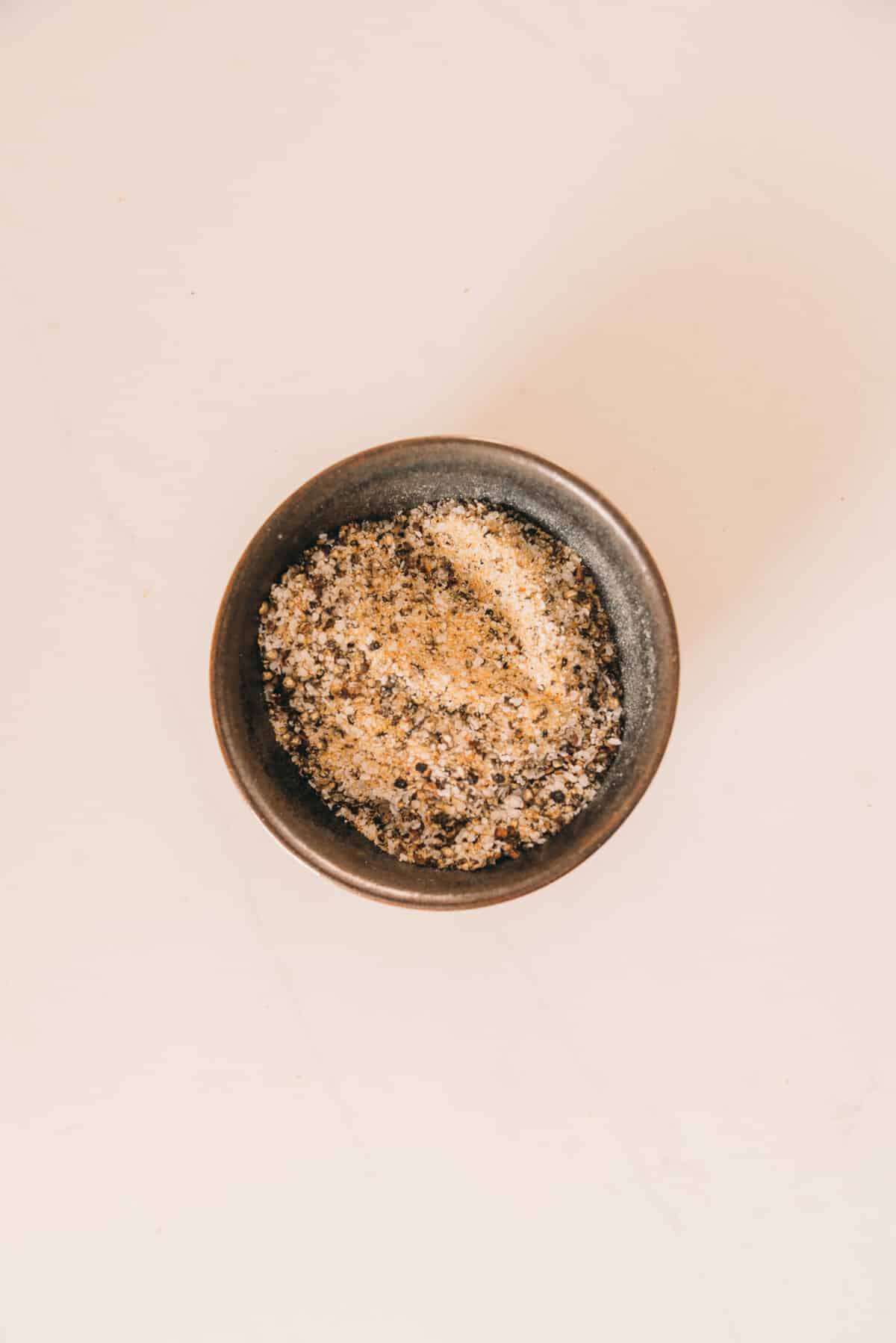
- Start by combining the salt, pepper, and garlic in a bowl.
- Then remove the ribs from the package and patting them dry with a paper towel.
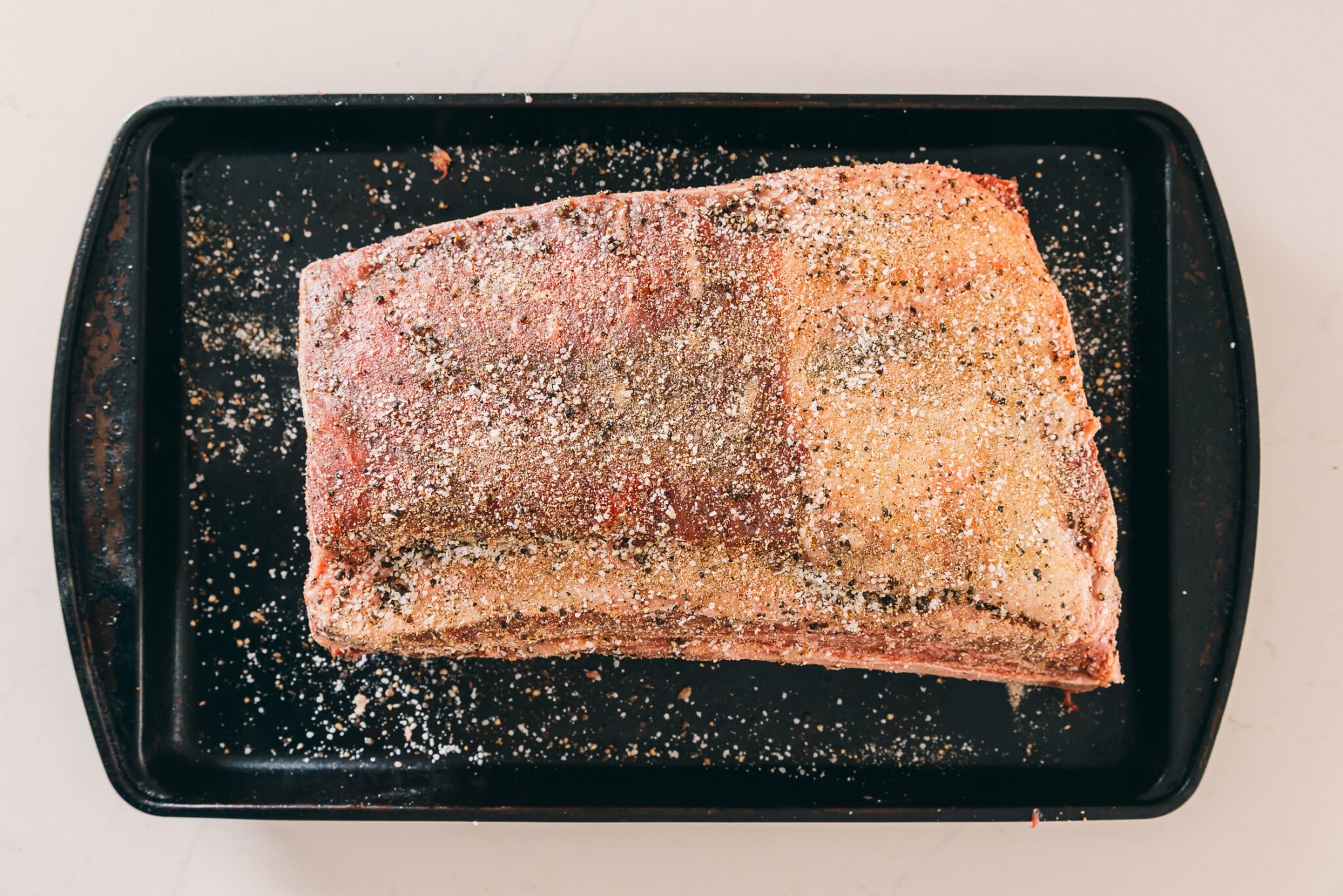
- Heavily coat the ribs on all sides, being sure to press the rub into the sides and edges too.
- Allow the beef to rest for 1 hour while you prep the grill.
- Prep the smoker for even heat of 225 degrees F with indirect heat. With a charcoal grill or stick smoker, aim for 225 to 250F.
- Add a drip pan with water to the grill under the grill grates.
- Add the wood chunks when the coals are almost ready to go, and allow the dark dirty smoke to burn off before adding your meat.
- When the smoke is clear, add the grill grate and place the ribs, bone side down, on the smoker.
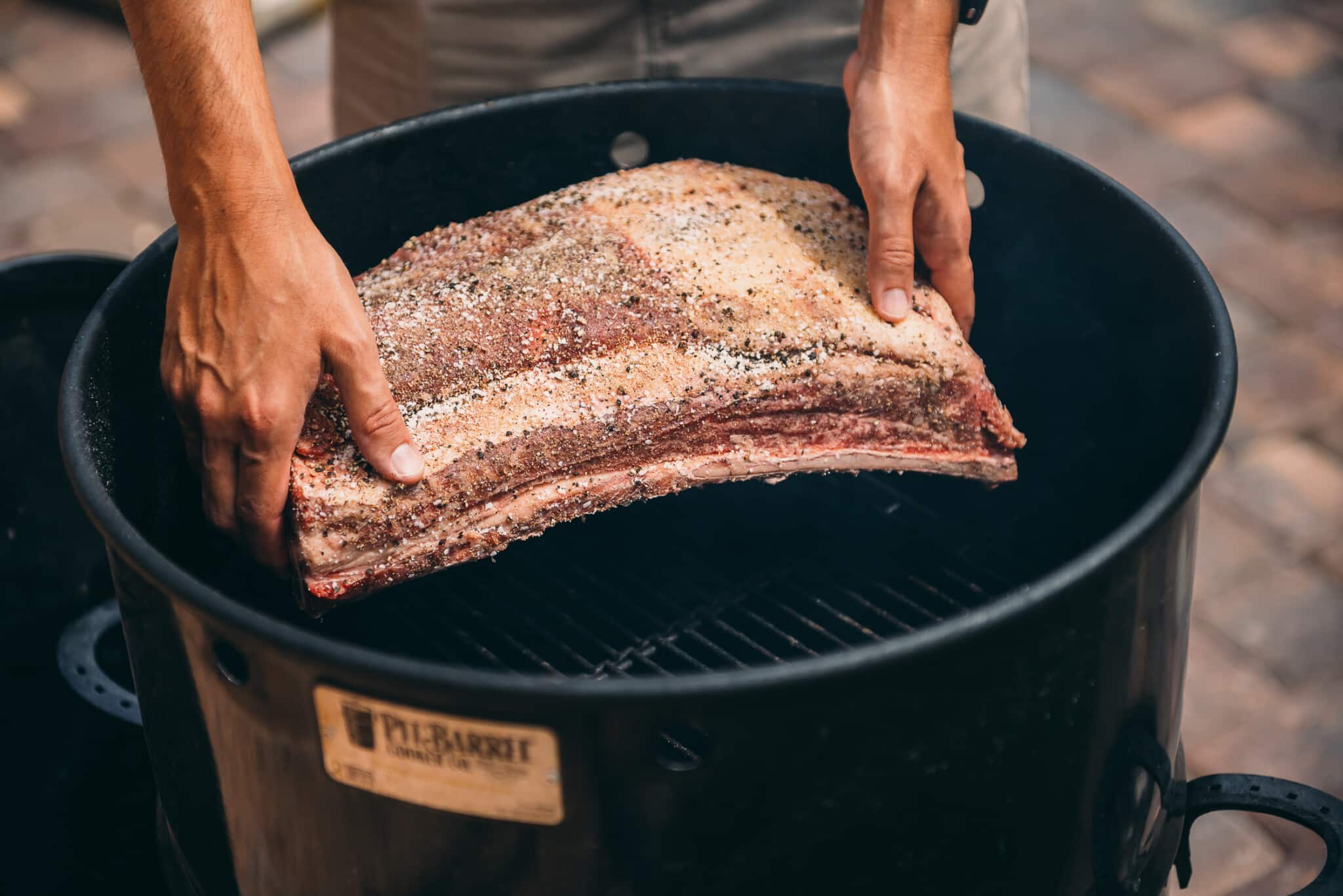
- Close the lid and allow the ribs to smoke until they have reached around 165 – 170 F.
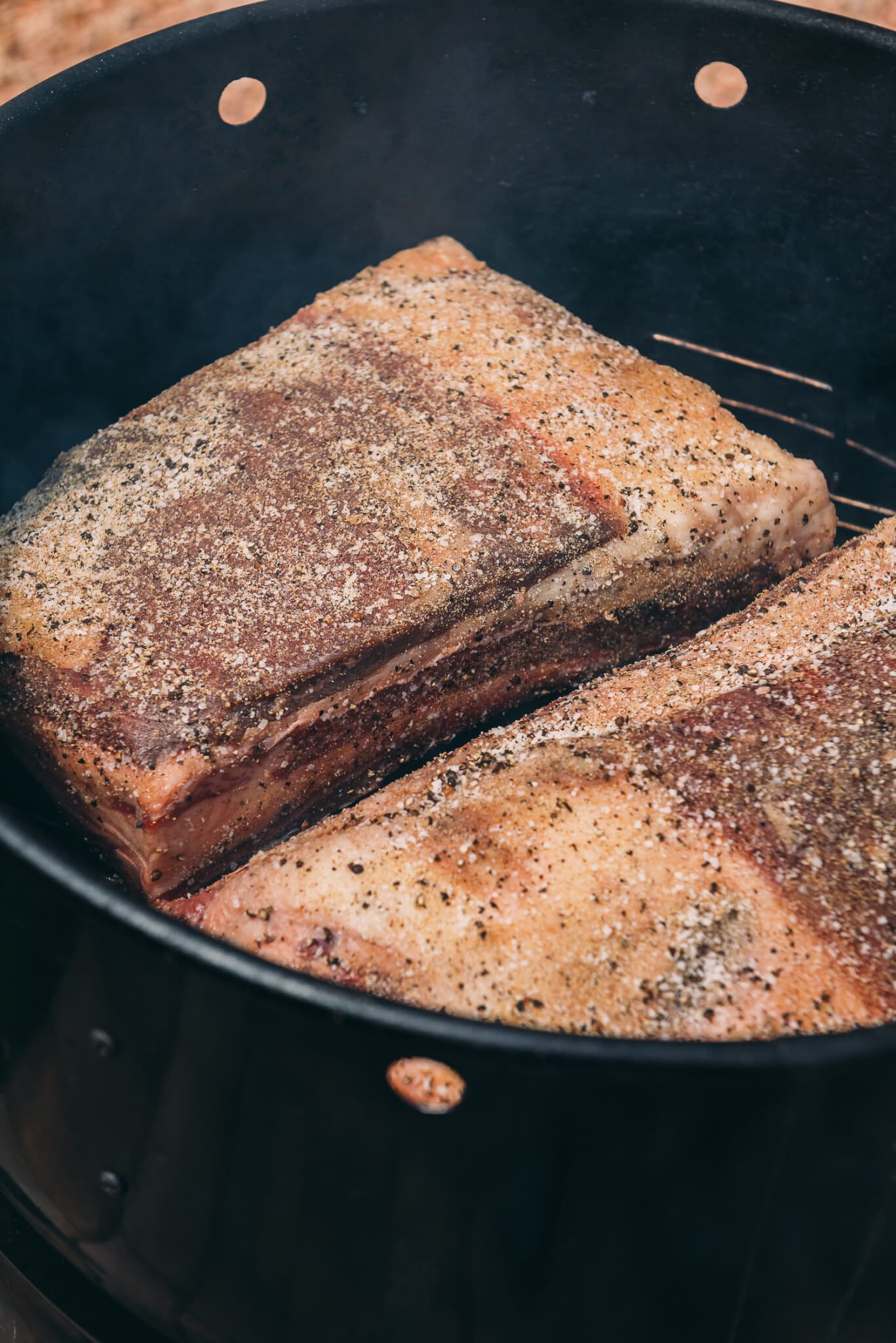
- At this point, remove the ribs from the smoker, spritz them with the mop and wrap them. This is a good time to check the fuel in your grill to see if it needs more as the beef will continue to cook.
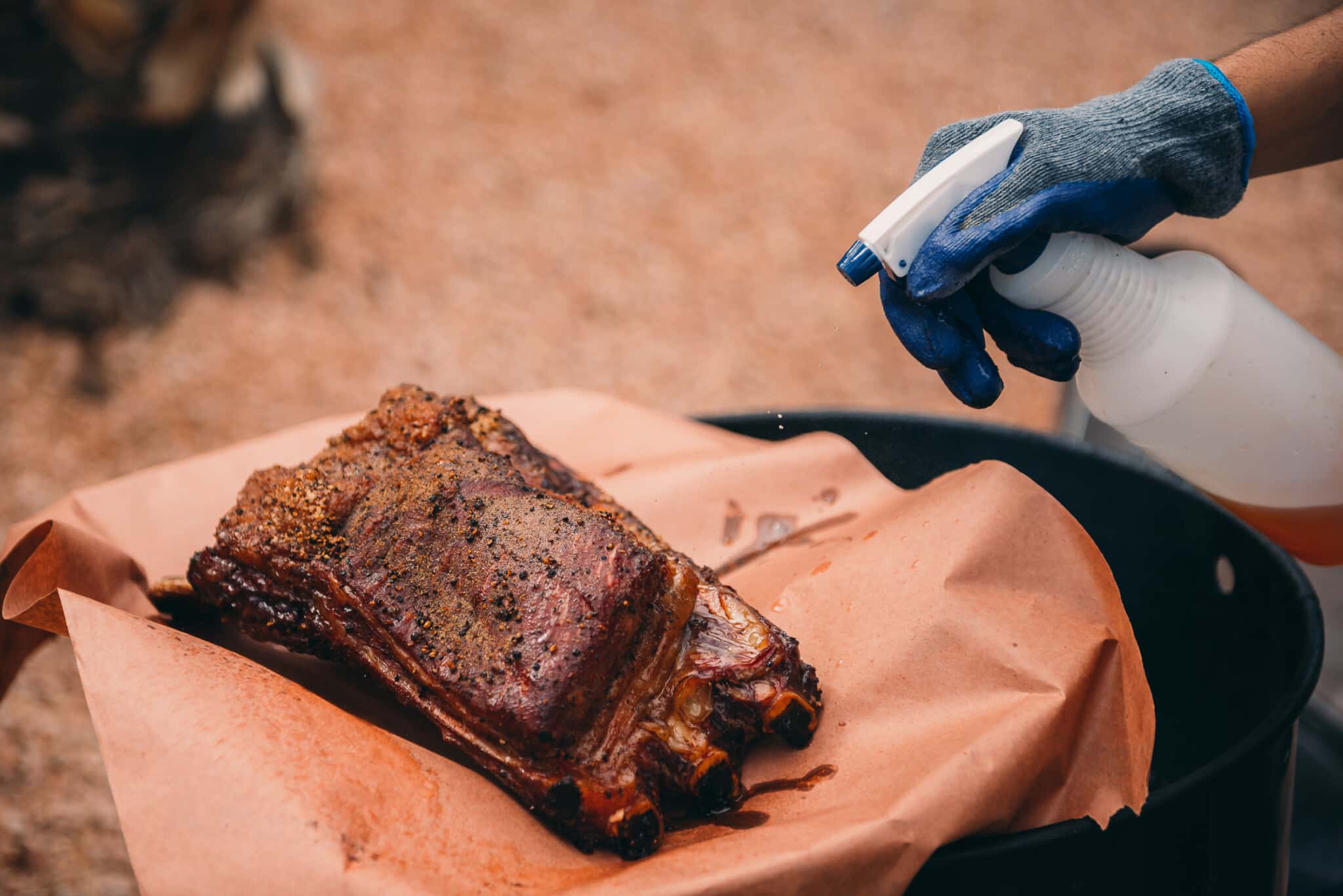
- Place the ribs back in the smoker and continue to cook, spritzing with the mop every 45 minutes until the meat reaches an internal temperature of 205 to 210F. An instant read thermometer will insert into the thickest part of the meat like butter when these ribs are ready, and is essential for checking the proper temp on your meat.
- Remove the beef ribs from the smoker and allow them to rest for 20 minutes before slicing them between the bones to serve.
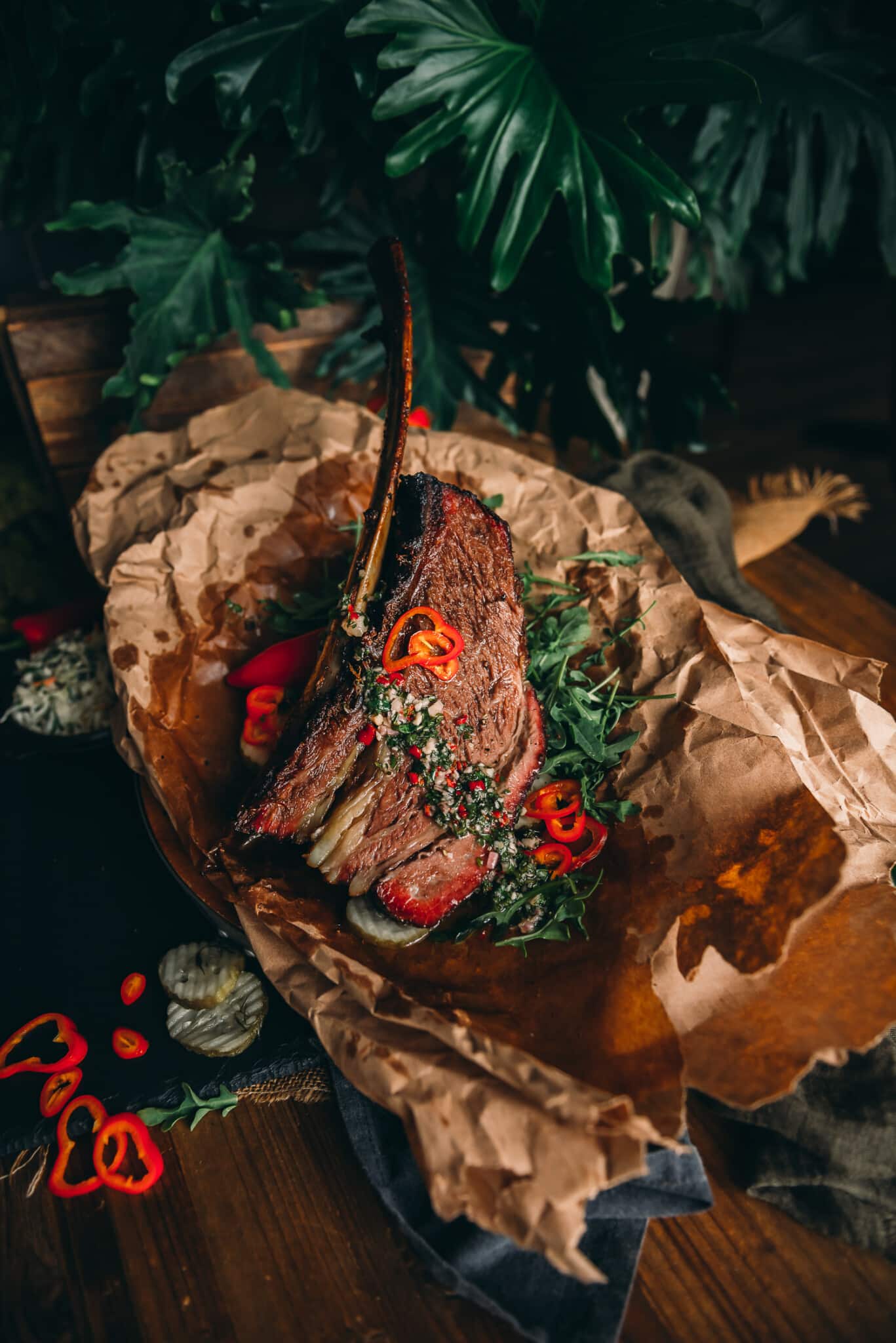
EXPERT RECIPE TIPS
- While we love all of our grills, we feel a drum-style charcoal grill or an offset smoker are the best choice for these ribs. They impart a true deep smoke flavor. If you are using a gas grill or a pellet grill (Traeger grill, Pit boss, etc), make sure to use a smoker tube filled with pellets, a foil packet, or smoker box with wood chips or even wood chunks in the back corner of your grill to add the rich smoke flavor these big meaty ribs are begging for!
- We love hickory and oak wood for smoking beef.
- For your smoked beef ribs to get a nice bark, liberally coat the ribs in the SPG seasoning blend. Don’t be gentle about it. Coat the rib meat in a thick layer of your spice mix.
- For a more tender bite, take the time to remove the cap, if it is there, from the ribs. You can find it by looking at the ribs from the side. There will be a discernable line of thick fat, about 2 inches, that run between the meat attached to the bone and more meat. Most beef ribs will have this cap removed, but if not, trim the meat from above the fat, leaving the fat still on the beef ribs.
- Shrinkage. It happens to the best of us. Where pork ribs, baby backs, and St Louis style ribs will both experience meat shrinkage while smoking, the king of loss has got to be beef ribs. Just know that it happens, and it’s just part of the cook. As the meat cooks, you will see more and more of the bone over time. You can see in the images in this post, what these racks of ribs looked like before and after cooking. Keep the loss in mind when calculating just how much meat you need for your group.
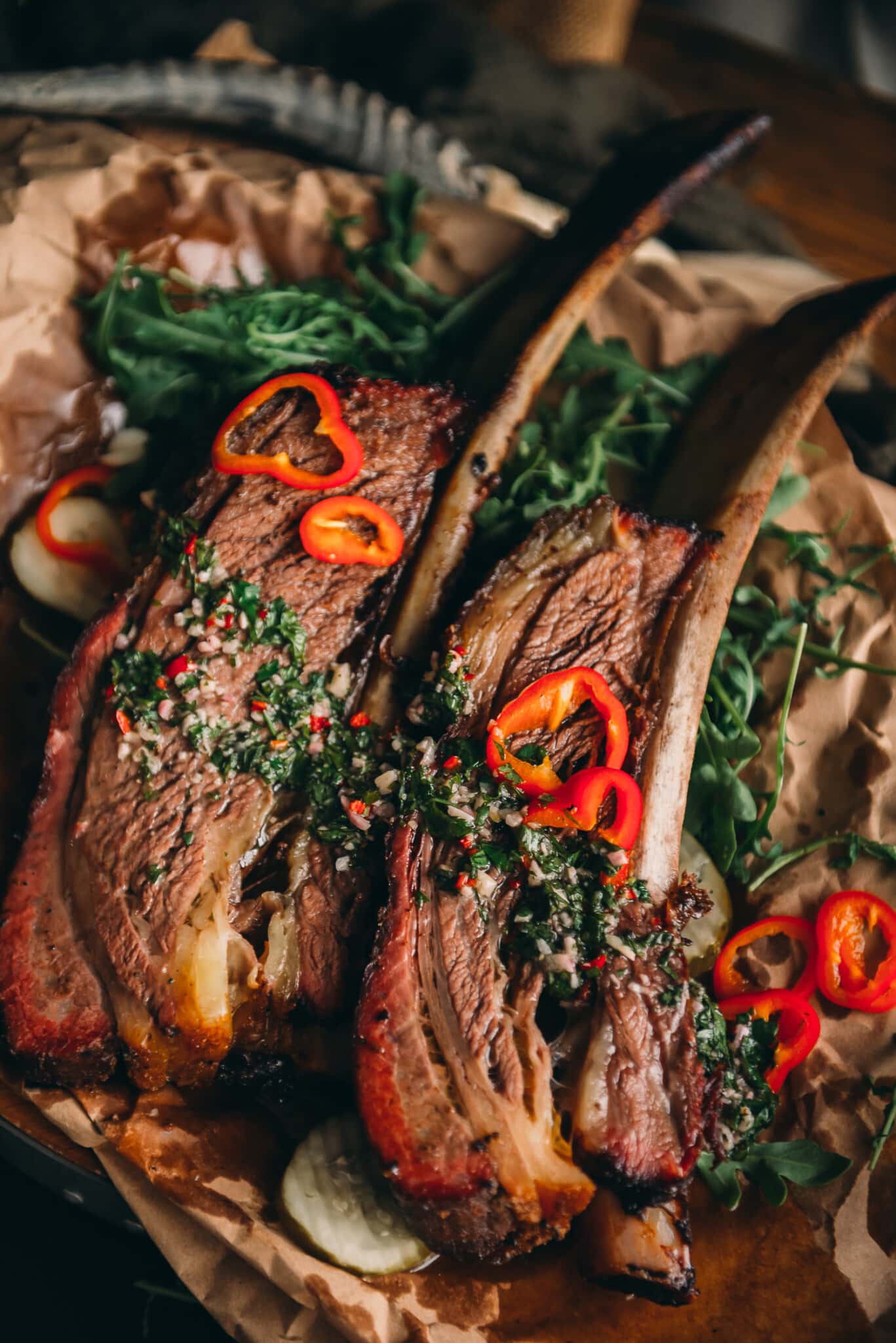
What to serve with beef ribs
We slathered these in fresh homemade cilantro chimichurri. The fresh herbs and mild heat blend beautifully with the hearty beef. Or go full-on authentic barbecue joint and serve this with white bread and a pickle. Pickled red onions are also perfect; the vinegar cuts the fat and balances flavors. We also love our homemade keto bbq sauce with these ribs or any of your favorite barbecue sauces, coleslaw, broccoli or potato salad, creamy smoked mac and cheese, and smoked brisket bbq beans.
Leftovers & Reheating
Store leftovers in an airtight container or wrapped in foil in the fridge for up to 3 days. If You aren’t going to serve them on the bone again, consider removing the meat from the bone and shredding it for easy use later.
Reheat beef ribs by placing the ribs in a foil pan with a splash of the vinegar-based bbq sauce, beer, or even water. Cover tightly with foil and reheat in an oven preheated to 325 until heated through.
If the meat has been removed from the bone, and you are reheating small portions of shredded beef, microwave in short 30-second batches until heated through.
Use the leftover shredded smoked ribs in a breakfast hash, sandwiches, quesabirria tacos, enchiladas, soups, and any other recipe that calls for shredded beef.

FAQs
Beef ribs become tough when they haven’t been cooked long enough to reach an internal temperature of 205F to 210 degrees F. We’ve been programmed to cook beef to 135F, but to in order for tough cuts that have a lot of connective tissue to become tender, they need to cook long past that to allow everything to break down, loosen and become tender enough that you could shred the meat.
Nope. But the wrap helps. Some will advise against it. However, I found that with huge bbq beef ribs over 5 lbs, it helped to speed up the cooking time and keep the meat moist. We recommend wrapping in pink butcher paper, which allows the air to still breathe, instead of a tight aluminum foil wrap which would trap heat in and create more of a steam bake.
No. Removing the membrane on beef ribs can be tough, and it isn’t ideal to eat. However, we tested removing and keeping the membrane on and found that for the smoke process, the rib bones held the meat much better with the membrane attached. If you choose to keep it on, be sure to remove it before serving.
Depending on the size of your beef ribs, weather, altitude, and how well your grill holds heat, beef ribs can be as quick as 6 hours on the grill to over 10. With barbecue, we always recommend a good meat thermometer and cooking to internal temp not ‘how long.’ A good rule of thumb is to start early so that any large cut you’re smoking will have the time it needs before you want to serve dinner or smoke a day in advance.
A probe thermometer that can stay in the grill inserted into the thickest part of the meat, away from the bone, is the best way to monitor how well these ribs are smoking.
Plan for one rib per person when it comes to beef plate ribs. With sides, that’s plenty.
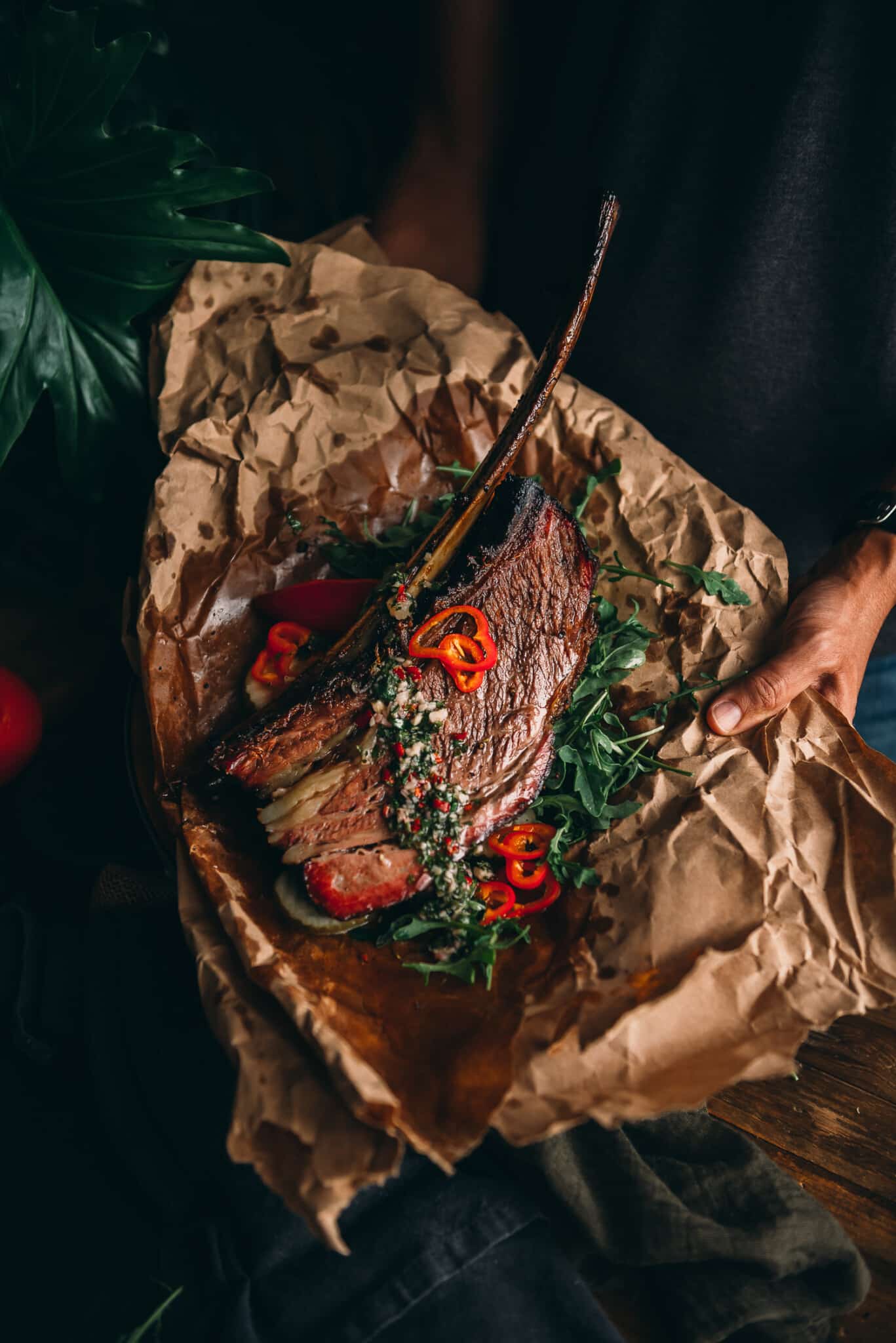
MORE SMOKED BEEF RECIPES
Beef Recipes
The Best Smoked Prime Rib on a Pellet Grill
Beef Recipes
Smoked Cowboy Steak
Beef Recipes
How to Smoke a Ribeye
Beef Recipes
Smoked Tri-Tip
Have you tried this recipe? Do us a favor and rate the recipe card with the ⭐ ⭐ ⭐ ⭐ ⭐ and drop a comment to help out the next reader.
Smoked Beef Ribs
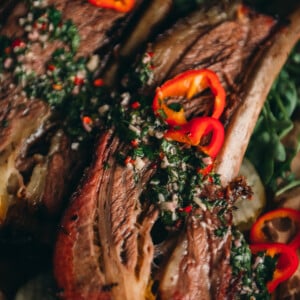
Ingredients
For the ribs
- 3 tbsp Salt
- 3 tbsp Pepper
- 3 tbsp Garlic powder
- 2 racks Beef Ribs 6.5 – 7 lbs each, 3 to 4 bones
For the mop
- Vinegar Based BBQ sauce for mop
To Serve
Instructions
Prep the beef plate ribs
- Remove the ribs from their package and pat ribs dry
- Mix spices in a bowl.
- Rub all over ribs liberally, coating both sides with the SPG blend.
- Let the ribs rest for 1 hour.
Prep the grill
- Prep your charcoal by adding 20 briquets to a charcoal chimney.
- Place over a natural fire starter and allow the briquets to heat up for 15 minutes until 70% ashed over.
- Arrange the coals at the bottom of your grill.
- Add wood chunks and a few more fresh briquets to the top. You are ready to grill when the smoke is clean (not dark but light wispy blue).
- Place a disposable foil pan in the smoker and carefully fill it with water.
- Let the grill heat to an even temperature of 225 to 250.
Smoke the ribs
- Arrange your beef ribs in the smoker and cover with lid.
- Cook the ribs, checking every hour or so to maintain a consistent heat of 225 – 250F; you may need to add more fuel and refill the water tray.
Mop & wrap
- When the ribs reach around 165 – 170F, spritz with a mop and wrap the ribs.
- Return to the grill.
- Cook the beef ribs until they reach an internal temperature of 210 F, about 7 ½ to 10 ½ hours.
Rest
- Carefully remove the ribs from the smoker and tent with foil.
- Allow the ribs to rest for 20 minutes.
Serve
- Slice the ribs along the bones into individual ribs.
- Serve immediately with homemade cilantro chimichurri or keto bbq sauce on the side.
Notes
Nutrition
Bookmark this recipe now!
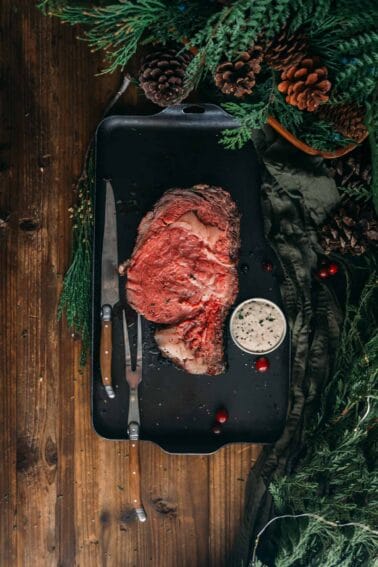
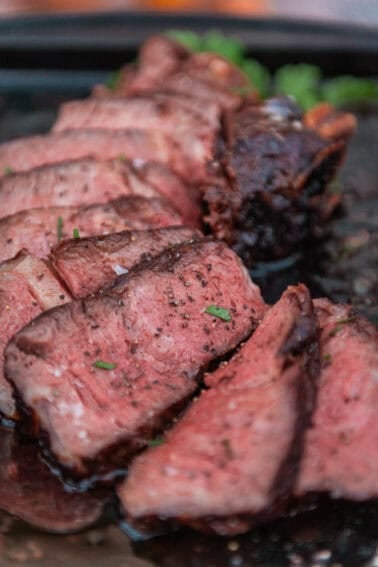
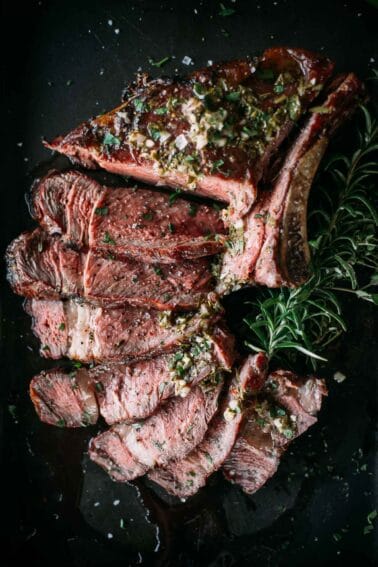
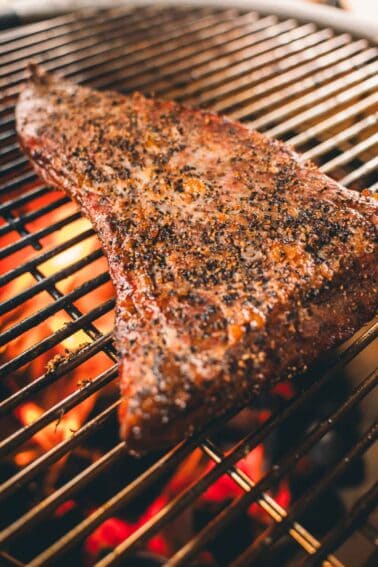
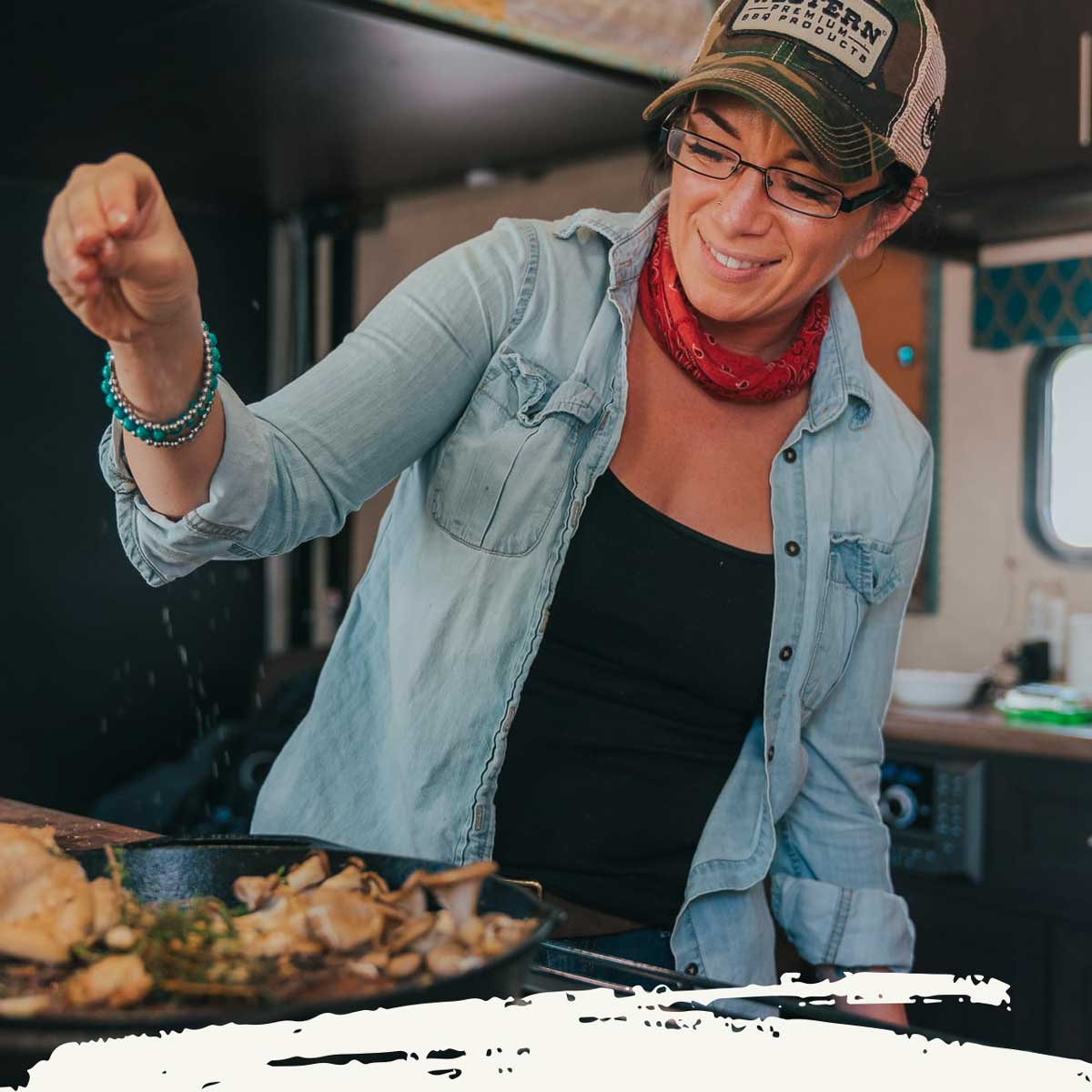
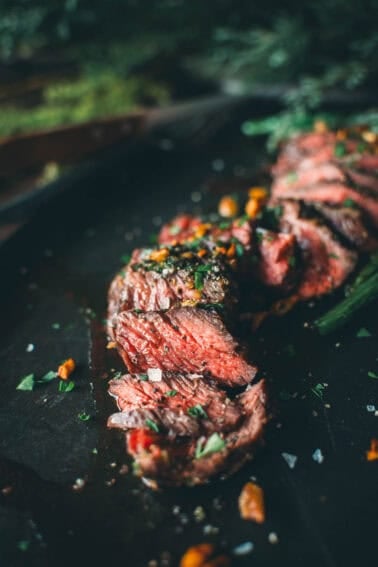
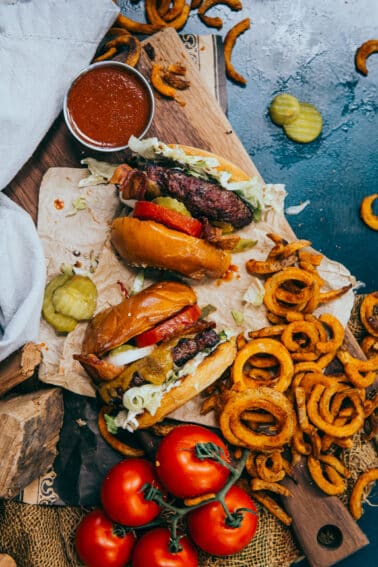
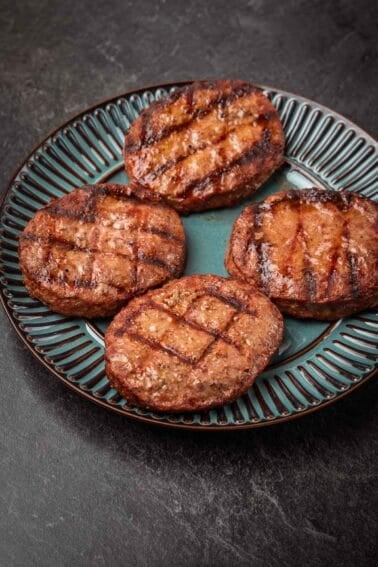
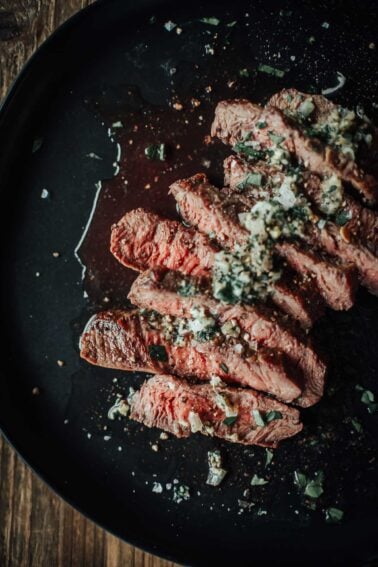









These were amazing and so fun to eat, and that chimichurri, well, I want to put it on everything! Another amazing recipe!
GIRLLLLLLLLLL!
I’m seriously drooling over here! You know the way to my heart! These look absolutely amazing. These ribs are my absolute favorite! I get them from Terry Blacks every time I’m in Austin. I dare say I might attempt these myself with your thorough guide!
Made this on the big, black Webber Kettle: STELLAR!!!!
Just curious, when you use wood chunks, what is your go to choice for wood with ribs, steak, or roasts?
hey there Jason, glad you could find some dino ribs!!! They are so much fun.
For wood: I always use Western Wood bbq products (you can pick them up at the grocery store in most places, walmart, etc).
For steaks – they cook a lot faster so I can be more liberal with what I choose for how much flavor I want. Mesquite is a great choice here, but personally, not my favorite.
Beef ribs and roasts – hickory or post oak. The post oak is hard to find, but man, it’s my favorite!
For pork ribs – Id run hickory, maple, pecan.
If you can find them, Western also makes Jack Dannels barren chunks and chips, those are made from the actual broken down barrels that JD can’t use any more. And I love using those on steaks just for the fun of it.
Clearly, I could talk about this for a while…..
Thanks for always following along! (Did you see the giveaway on our facebook page this week?? make sure to enter!)
Love the look of your blog!! (and the look of these ribs). Looking forward to your future posts 🙂